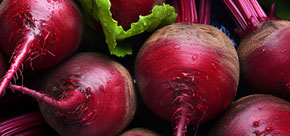Fresh Produce Standards
Download Fresh Produce Standards Manual
Download Fresh Produce Standards Manual – Including GLOBALG.A.P Module
Download the changes to the Fresh Produce Standards from 1 February 2025
Download watercress protocol
Download hops protocol
Useful Documents
UK Crops grown and risk categories
Fresh Produce assessment structure
DOCUMENTS AND PROCEDURES Version 5.1
Click to view
Key – Those standards which have greater significance (all other standards are normal)
Recommendation – Those which do not affect certification
New – A completely new standard which the member must now adhere to
Revised – A standard that has changed and requires the member to take some different or additional action to before
Upgraded – The standard has been upgraded to a Key standard or from a Recommendation to a full standard
Appendix – Referenced in ‘How you will be measured’. Indicates that additional information is provided in the Appendices, which are available at the end of each section.
Cropping Categories Fresh Produce
Category 0 - Those you can eat raw and have a significant risk or history of pathogen contamination
Category 1 - Those you can eat raw and which do not have a protective skin that is removed before eating; they may also have a significant risk or history of pathogen contamination.
Category 2 - Those you can eat raw and which either have protective skin or grow clear of the ground, or that have no history of pathogen contamination.
Category 3 - Those that the customer always cooks.
An up-to-date list of the crop categories can be found on the Red Tractor website.
PR.DP.1 Key
The farm, as a whole, must present an acceptable and tidy appearance to the general public. The site management must not present a food safety, animal welfare or environmental risk.
How you will be measured
PR.DP.1.a
PR.DP.1.b
PR.DP.1.1
A farm map must be present and areas of specific risk are identified
How you will be measured
PR.DP.1.1.a
PR.DP.1.1.b
Farm map
PR.DP.2
A documented plan for the effective management of serious incidents and potential emergency situations that threaten food safety, legality or the environment must be in place and known to those involved in farm tasks
How you will be measured
PR.DP.2.a
PR.DP.2.b
PR.DP.2.c
Contingency/emergency plan
PR.DP.3
Systems must be in place for recording, investigating and resolution of any complaints and/or sampling results that are relevant to the requirements of the Red Tractor Standards (REVISED)
How you will be measured
PR.DP.3.a
- Complaint records
- Complaints trending
- Sample Records
PR.DP.4
Where records are required by the standards, they must be retained for a minimum of two years unless otherwise specified.
PR.DP.5
A completed and signed food safety policy declaration is recorded and updated annually.
Signed food safety policy declaration
PR.DP.6
A documented Fire Risk Assessment for the control and prevention of fires in all farm buildings must be in place and known to key personnel.
Fire Risk Assessment
More Standards
Download Fresh Produce Standards Manual
Download Fresh Produce Standards Manual – Including GLOBALG.A.P Module
Download the changes to the Fresh Produce Standards from 1 February 2025
Download watercress protocol
Download hops protocol
Useful Documents
UK Crops grown and risk categories
Fresh Produce assessment structure
- DP.1.1 – One or more maps may be used and this may be held as a hard copy or as an electronic document. Examples of details which may be included on farm maps: fields, orchards, watercourses (details of water sources and irrigation distribution systems), glasshouses, growing houses (including polytunnels), packhouses, staff accommodation, any rented land and
storage, specific hazards (e.g. power lines), footpaths. - DP.2 – For further guidance on managing incidents that threaten food safety, refer to the appendix.
- DP.3 – Includes complaints made by local authority, general public, customers or other
